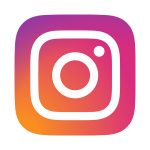Who can forget the GIFs of the ‘90s, or the more up-to-date focus on flat design?
Recently, we’ve seen a surge in popularity of responsive web design, as more and more sites join the drive to become ‘mobile ready’ which is now even more important in the wake of Google’s Mobile Friendly update.
Let’s examine some of the most popular for this and the coming year.
1. The Proliferation of UI Patterns
[nz_sep top="0" bottom="20" width="100" height="2" type="solid" color="#ffb700" align="left" /]
One of the side effects of responsive design has meant that a lot of sites look similar. However, responsive design isn’t solely to blame. The rise of
WordPress sites and the booming theme market also have a hand in it. And some folks, such as Matthew Monbre, have copped to being guilty of following everyone else’s look with his company’s site.
[nz_gap height="25" /]
[nz_gap height="25" /]
But having a similar look isn’t necessarily a bad thing. That’s because we’ve changed the way we consume the web, which has resulted in a lot of common UI design patterns. Design patterns have matured and as such, there’s little in the way of innovation when it comes to UI patterns.
In other words, a checkout will still be a checkout and should function as such. Same with a login model. There’s no real reason to reinvent the wheel. UI patterns must guide users through a smooth experience.
[nz_gap height="25" /]
Here’s a few patterns you should be familiar with:
[nz_gap height="25" /]
[nz_il type="none" icon="icon-checkmark" icon_color="#ffb700" background_color="" ]
- The hamburger menu: While some criticize this pattern’s use, there’s no doubt that it’s widespread use makes the function easily recognizable for users.
- Account registration: You’ll find this pattern whenever you try to register for a site. There might be a form to fill out or a button that’ll allow you to use a social account to sign up. Multi-step form wizards are also effective since they “chunk out” the required fields, reducing friction and encouraging users to flow through the process.
- Long scroll: Placing all your important elements above the fold is now a well-known myth. Furthermore, almost everyone is accustomed to long scrolls thanks to mobile devices. The technique works especially well for sites that want to lure users through storytelling, and you can still mimic a multi-page site by breaking the scroll into clear sections.
- Card Layouts: Pioneered by Pinterest, cards are everywhere on the web because they present information in bite-sized chunks perfect for scanning. Each card represents one unified concept. Since they act as “content containers”, their rectangular shape makes them easier to re-arrange for different device breakpoints.
- Hero images: Since vision is the strongest human sense, HD hero images are one of the fastest ways to grab a user’s attention. Thanks to advances in bandwidth and data compression, users won’t suffer from slow load times either. One common layout you’ll find is a hero image above the scroll, followed by either zig-zagging sections or a cards-based arrangement.
[/nz_il]
[nz_gap height="25" /]
We’ll describe 7 of the most popular animation techniques:
[nz_gap height="25" /]
[nz_il type="none" icon="icon-checkmark" icon_color="#ffb700" background_color="" ]
- Loading animations These are used to entertain users and delight users during an otherwise tedious experience. Loading animations tend to be popular for flat design, minimalism, portfolios and one-page sites. Keep. them simple and avoid adding sound. They should however match your site’s personality and color palette.
- Navigation and menus (nonscrolling) Hidden navigation menus have become increasingly popular, especially as they can be used to save screen space. As you can see in the example below created in the collaborative prototyping tool UXPin, these use animations to reveal a menu when clicking on a specific button and prevent a jarring transition (like a navigation drawer hidden behind a hamburger icon).
- Hover animations Hover effects give a more intuitive feel to a site as users mouse over content. Users unsure about a feature’s function tend to hover over them automatically for instant visual feedback.
- Galleries and slideshows Galleries and slideshows are an effective way to showcase multiple images without overburdening the users. These are great for photography sites, product showcases, and portfolios.
[/nz_il][nz_gap height="25" /]
-

-

-
طراحی سایت,طراحی وب سایت,فروشگاه اینترنتی,سئو,بهینه سازی سایت,سئو پیچ
-

-

-

-

-

-

-
طراحی سایت|بهینه سازی وبسایت|ساخت سایت|سئو سایت|طراحی وب سایت
-

-
طراحی سایت|بهینه سازی وبسایت|ساخت سایت|سئو سایت|طراحی وب سایت
-

[nz_gap height="25" /]
2. Additional Advice on Web Design Trends
[nz_sep top="0" bottom="20" width="100" height="2" type="solid" color="#ffb700" align="left" /]
Don’t follow trends just because they’re the “hip” thing to do at the moment. Trends represent popular techniques for good reason, but make sure it’s best for your users. For example, an e-commerce site certainly wouldn’t do well as a single-page infinite scrolling site.
Trends are nothing more than additional tools in your designer toolbox. Always pick the right ones for the job.
For more advice on the 10 most important web design trends, check out the free e-book Web Design Trends 2015 and 2016. You’ll learn from the best with analysis of 166 examples from companies like Google, Apple, Reebok, BMW, Intercom, Adidas, Dropbox, and many more.
















